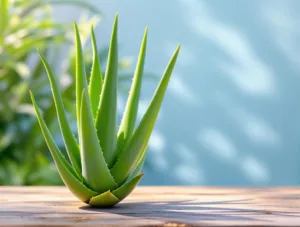The Ultimate Guide to Managing Oily Skin and Preventing Acne Naturally
Introduction
Oily skin is a common dermatological concern affecting millions of people worldwide. Characterized by excess sebum production, oily skin often leads to clogged pores, acne breakouts, and a persistent shine that can be difficult to manage. While genetics, hormones, and environmental factors play a significant role, proper skincare and lifestyle adjustments can help regulate oil production and prevent acne effectively.
This comprehensive guide explores the science behind oily skin, its causes, and the best natural methods to control excess oil while maintaining a healthy complexion. From skincare routines to dietary changes and home remedies, we’ll provide actionable tips backed by dermatological insights to help you achieve balanced, acne-free skin.
Understanding Oily Skin: Causes and Characteristics
What Causes Oily Skin?
Oily skin results from overactive sebaceous glands, which produce an excess of sebum—a natural oil that protects and hydrates the skin. Several factors contribute to this condition:
- Genetics: If your parents have oily skin, you’re more likely to inherit it.
- Hormonal fluctuations: Androgens (male hormones present in both sexes) stimulate sebum production, which is why teenagers and pregnant women often experience oilier skin.
- Climate and humidity: Hot, humid weather can increase oil production.
- Overwashing or harsh skincare: Stripping the skin of natural oils can trigger rebound oiliness.
- Diet: High-glycemic foods and dairy may exacerbate sebum production in some individuals.
How Oily Skin Leads to Acne
When excess sebum mixes with dead skin cells, it clogs pores, creating an ideal environment for acne-causing bacteria (Cutibacterium acnes). This leads to:
- Blackheads and whiteheads (non-inflammatory acne)
- Papules and pustules (inflammatory acne)
- Cysts and nodules (severe acne)
Understanding these mechanisms is crucial for developing an effective skincare strategy.
Best Natural Skincare Practices for Oily Skin
1. Cleansing: The Foundation of Oily Skin Care
Do:
- Use a gentle, sulfate-free cleanser twice daily.
- Look for ingredients like salicylic acid, tea tree oil, or niacinamide, which regulate oil without over-drying.
- Avoid hot water, which can strip natural oils and worsen sebum production.
Don’t:
- Overwash (more than twice a day), as this can irritate the skin.
- Use alcohol-based toners, which can cause rebound oiliness.
Example: A salicylic acid cleanser (like CeraVe Renewing SA Cleanser) helps exfoliate pores while maintaining moisture balance.
2. Exfoliation: Keeping Pores Clear
Regular exfoliation removes dead skin cells that contribute to clogged pores.
Recommended Methods:
- Chemical exfoliants (AHAs/BHAs): Glycolic acid (AHA) and salicylic acid (BHA) are excellent for oily skin.
- Natural exfoliants: Oatmeal or rice powder provide gentle physical exfoliation.
Tip: Exfoliate 2-3 times per week to avoid irritation.
3. Moisturizing: A Must (Even for Oily Skin)
A common myth is that oily skin doesn’t need moisture. However, skipping moisturizer can lead to dehydration, prompting more oil production.
Best Moisturizers for Oily Skin:
- Gel-based or oil-free formulas (e.g., Neutrogena Hydro Boost)
- Non-comedogenic oils like jojoba oil, which mimic natural sebum and regulate production.
4. Sun Protection: Non-Negotiable
Many oily-skinned individuals avoid sunscreen, fearing greasiness. However, UV exposure thickens the skin, worsening clogged pores.
Ideal Sunscreens:
- Mineral (zinc oxide or titanium dioxide) – Less likely to clog pores.
- Matte-finish or gel sunscreens (e.g., La Roche-Posay Anthelios Clear Skin).
Diet and Lifestyle Adjustments for Balanced Skin
1. Foods That Help (and Harm) Oily Skin
Eat More:
- Omega-3 fatty acids (salmon, flaxseeds) – Reduce inflammation.
- Antioxidant-rich foods (berries, green tea) – Combat oxidative stress.
- Zinc-rich foods (pumpkin seeds, lentils) – Regulate oil production.
Avoid or Limit:
- High-glycemic foods (sugar, white bread) – Spike insulin, increasing sebum.
- Dairy products (for some individuals) – Linked to hormonal acne.
2. Hydration and Its Role in Oil Control
Dehydration signals the skin to produce more oil. Drinking at least 2 liters of water daily helps maintain balance.
3. Stress Management
Cortisol (the stress hormone) increases sebum production. Practices like yoga, meditation, and adequate sleep can help keep breakouts at bay.
Natural Home Remedies for Oily Skin and Acne
1. Clay Masks for Oil Absorption
- Bentonite or kaolin clay draws out impurities and excess oil.
- Recipe: Mix 1 tbsp clay with apple cider vinegar or water, apply weekly.
2. Tea Tree Oil for Acne Spot Treatment
- Antibacterial properties reduce acne-causing bacteria.
- Use: Dilute with a carrier oil (like jojoba) and apply to blemishes.
3. Aloe Vera for Soothing and Hydration
- Anti-inflammatory and lightweight, ideal for oily skin.
- Application: Use pure aloe gel as a moisturizer or mask.
When to See a Dermatologist
If natural methods don’t yield results, consult a dermatologist for:
- Prescription retinoids (like tretinoin)
- Hormonal treatments (for women with PCOS-related acne)
- Professional extractions or peels
Conclusion: Achieving Balanced Skin Naturally
Managing oily skin and preventing acne requires a holistic approach—combining proper skincare, diet, and lifestyle habits. While genetics play a role, consistent use of gentle, non-comedogenic products and natural remedies can significantly improve skin health.
Final Tips:✔ Cleanse and moisturize daily – Never skip hydration.✔ Exfoliate wisely – Avoid over-scrubbing.✔ Eat a balanced diet – Focus on anti-inflammatory foods.✔ Stay patient – Skin takes time to adjust to new routines.
By adopting these strategies, you can achieve a clear, matte, and healthy complexion without relying solely on harsh chemicals. Remember: balance is key—listening to your skin’s needs will always yield the best results.
Would you like any refinements or additional details on specific sections?









Add comment